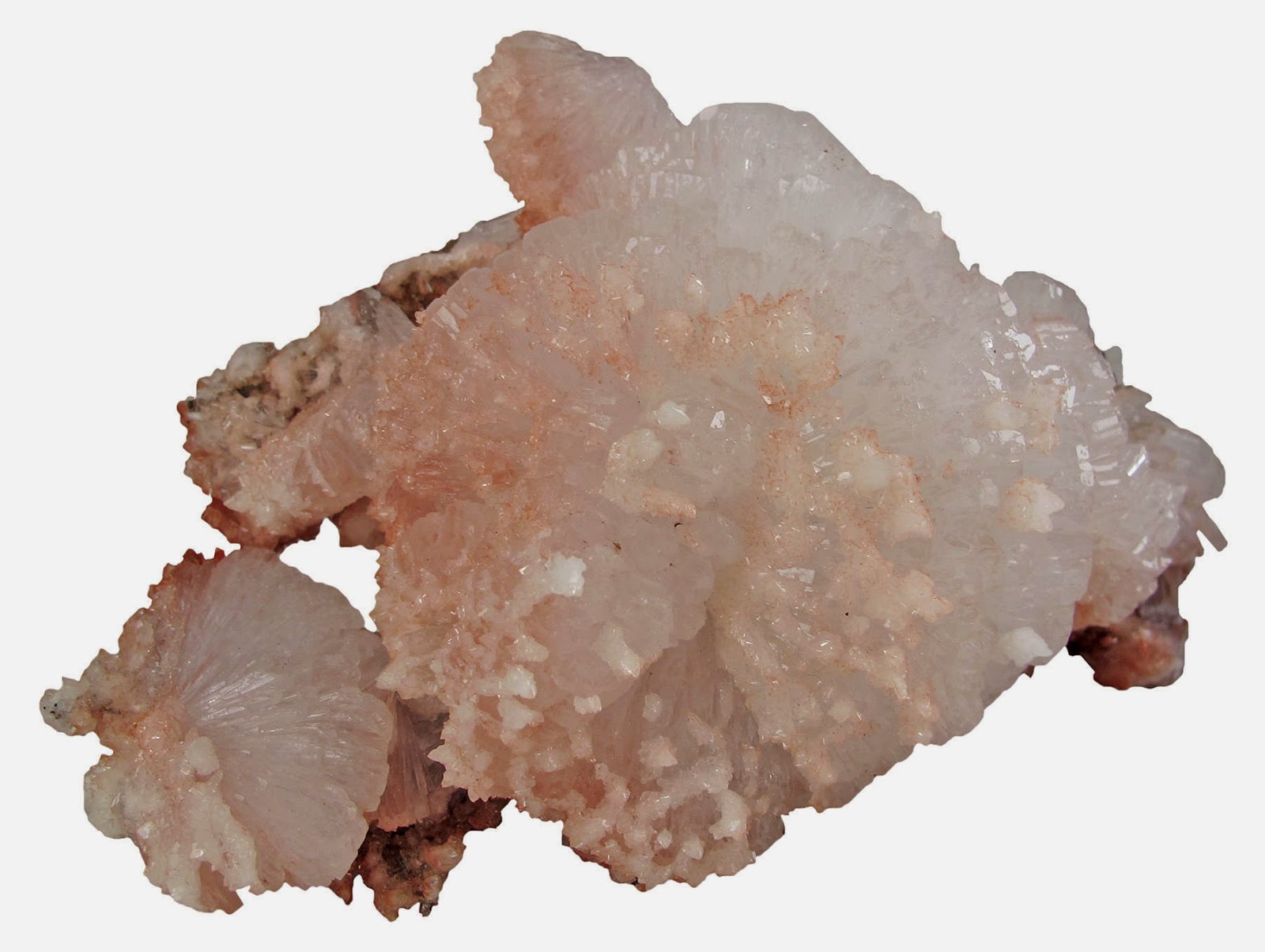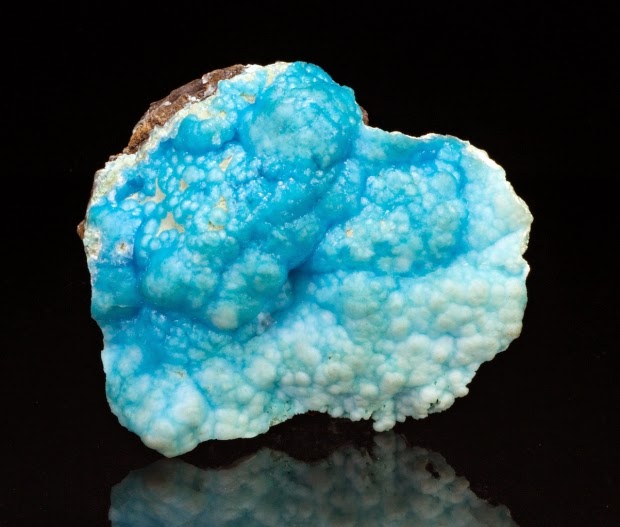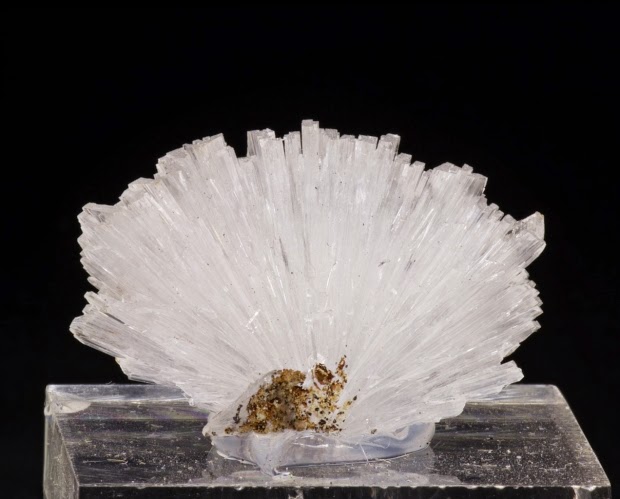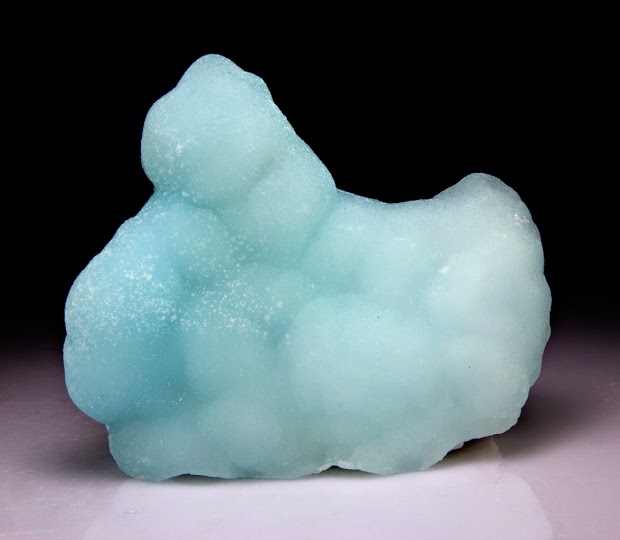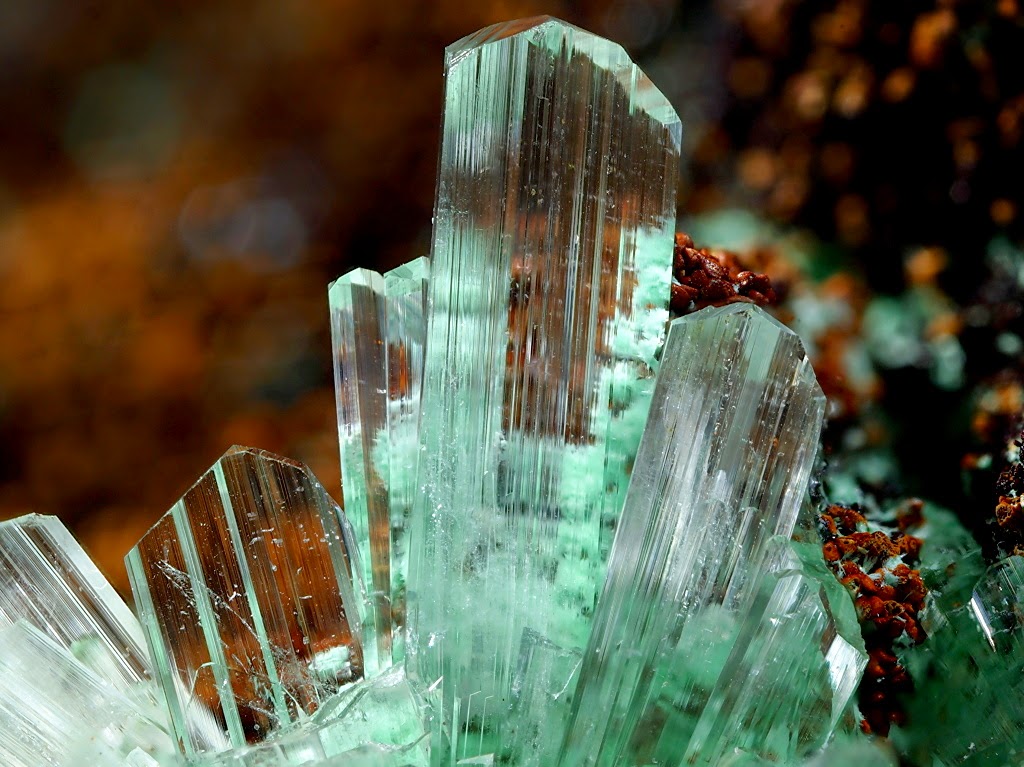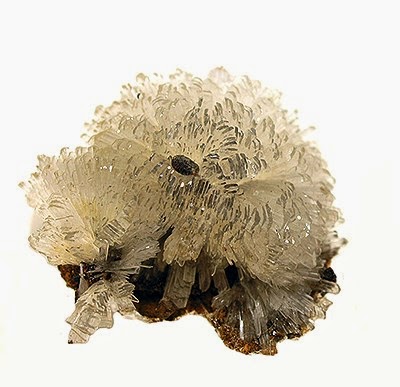
Chemical Formula: Zn4Si2O7(OH)2·H2O
Locality: Nerchinak in Transbaikalia, Siberia.
Name Origin: Named after the hemimorphic nature of the crystals.Hemimorphite, is a sorosilicate mineral which has been historically mined from the upper parts of zinc and lead ores, chiefly associated with smithsonite. It was often assumed to be the same mineral and both were classed under the same name of calamine. In the second half of the 18th century it was discovered that there were two different minerals under the heading of calamine – a zinc carbonate and a zinc silicate, which often closely resembled each other.
The silicate was the more rare of the two, and was named hemimorphite because of the hemimorph development of its crystals. This unusual form, which is typical of only a few minerals, means that the crystals are terminated by dissimilar faces. Hemimorphite most commonly forms crystalline crusts and layers, also massive, granular, rounded and reniform aggregates, concentrically striated, or finely needle-shaped, fibrous or stalactitic, and rarely fan-shaped clusters of crystals.Some specimens show strong green fluorescence in shortwave ultraviolet light (253.7 nm) and weak light pink fluorescence in longwave UV.
Locality: Nerchinak in Transbaikalia, Siberia.
Name Origin: Named after the hemimorphic nature of the crystals.Hemimorphite, is a sorosilicate mineral which has been historically mined from the upper parts of zinc and lead ores, chiefly associated with smithsonite. It was often assumed to be the same mineral and both were classed under the same name of calamine. In the second half of the 18th century it was discovered that there were two different minerals under the heading of calamine – a zinc carbonate and a zinc silicate, which often closely resembled each other.
The silicate was the more rare of the two, and was named hemimorphite because of the hemimorph development of its crystals. This unusual form, which is typical of only a few minerals, means that the crystals are terminated by dissimilar faces. Hemimorphite most commonly forms crystalline crusts and layers, also massive, granular, rounded and reniform aggregates, concentrically striated, or finely needle-shaped, fibrous or stalactitic, and rarely fan-shaped clusters of crystals.Some specimens show strong green fluorescence in shortwave ultraviolet light (253.7 nm) and weak light pink fluorescence in longwave UV.
Physical Properties
Cleavage: {110} Perfect
Color: Brown, Colorless, Greenish gray, Yellow brown, White.
Density: 3.4 – 3.5, Average = 3.45
Diaphaneity: Transparent to translucent
Fracture: Conchoidal – Fractures developed in brittle materials characterized by smoothly curving surfaces, (e.g. quartz).
Hardness: 5 – Apatite
Luminescence: Fluorescent, Short UV=dull white, Long UV=dull white.
Luster: Vitreous (Glassy)
Streak: white
Photos:
